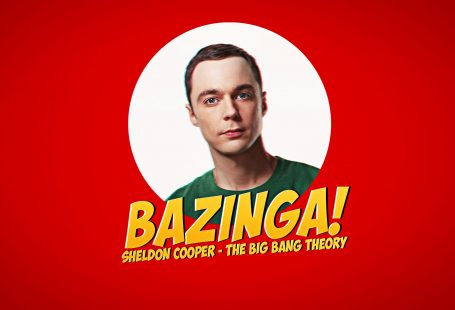Film law practice. A comparative study between Straw Dogs and Irreversible. How audience’s perception of sexual violence in films can influence BBFC’s valuation and vice versa
Abstract
The audience’s perspective and the BBFC’s position in regard to Straw Dogs (1971) and Irreversible (2002); the different position the BBFC took in respect to these films when it was decided to cut the rape scene in the first and to leave uncut the second one; the rules and the role of BBFC, its principals and socially useful function to protect vulnerable viewers and society from the effects of viewing potentially harmful content while respecting adult freedom of choice.
Film law practice. Some Point to examine
Since the turn of the century, violence, closely followed by sex, has been the most controversial and emotive aspect of films.
How audiences (male and female) understood sexual violence in films in relation to characters, story development and narrative outcomes? How generic placements and moral judgments have arrived at? Which is the relationship between audience and BBFC.
Which is the BBFC’s position in judging sexual violence in films? Is it always in tune with public opinion? One of the purposes of this article is to understand people’s feelings about violence and in particular sexual violence in films.
Sometimes filmmakers show horrifying or disturbing scenes just to impress the viewers or because they think that in that way they will obtain more success or reach the point that people will go to the cinema just to be shocked.
It is certainly true that people need always to be shaken and that dramas and cruelties are easier to perform on the big screen and thus the following questions have to be answered.
What do people think of screen violence? What does screen violence mean to people? What impact have such images on viewers? Which are BBFC’s criteria to judge sexual violence in a film? Are they equivalent to what people think? [1]
Then the above questions naturally involve others thoughts like the following.
Might cinema be a medium of dangerous, subversive influence? Is media violence potentially dangerous? These last doubts are probably the ones the BBFC has to answer for classifying films in the correct way.
Gender, sex-role socialization, and sexual violence in mass media can be studied from a variety of perspectives, but anyway, despite a vast amount of media effect research, absolute proof of harm, or of the extent of harm in showing violence in films, is elusive, not least because of the ethical and practical difficulties involved.
Regarding to sexual violence in particular, whether or not one is conscious of it, beyond the physical rapes taking place every two and a half minutes in the United States (United State Department of Justice 1993), representations of rape pervade contemporary popular media and thus our everyday lives.
For example, during every visit to the checkout stand at major U.S. grocery stores, a shopper is apt to see at least one magazine or newspaper with a story about rape advertised on the cover; these might include special multipart stories, such as “A Year in Rape” (Bizjak 1995), or continuing stories about specific cases, such as the University of California, Davis, a student accused of raping a number of women on campus over several years.[2]
It has to be noted that sexual violence in films is not always portrayed as it were real and for that reason is less dangerous. So, since film is a visual medium; an actress must first be an object; and every scene must entertain, it follows that a film can never tells an honest story about sexual violence. [3]
A poster a few years ago in New York subway showed fifteen girls and women, from toddlers to elderly, and announced they had one thing in common: they were potential victims of sexual assault. It was a thought-provoking moment: if all you knew about rape were from the movies and TV, you would think (as most men probably do) that only beautiful young women are raped. [4]
In general we are more concerned about the detrimental effects of exposure to violent images in pornography and elsewhere than to portray or deliberately misinterpret the myth that women (and even men sometimes) enjoy or in some way benefit rape, torture, or other forms of sexual violence.
Among the most problematic of media stereotypes are those concerning sexual violence, particularly certain images found in adult videos and ‘slasher’ films. Research has shown that exposure to media depictions of rape in which the woman appears to be responsible for her own victimization or appears to enjoy the assault can result in several changes in men’s cognitive appraisal of sexual violence (Donnerstein, Linz, & Penrod, 1987).[5]
Film law practice. Notes
[1] Despite of many researches, articles, books involved in solving the enigma, is difficult to find a unanimous answer to these questions. Some research indicates that sex-role stereotypes in the mass media are pervasive (Eisenstock, 1984; Feldstein & Feldstein, 1982; Goffman, 1976; Rossi & Rossi, 1985; Sternglanz & Serbin, 1974); other researchers working from a critical studies approach might concentrate on media depictions of rape as rooted in the political and cultural fabric of our society (e.g./ Fiske, 1987; Real, 1989). [2] Projansky S., Watching rape, film and television in postfeminist culture, New York University Press 2001, pag.90. [3] Thus Hollywood, when it tries to approach serious sexual topics, tends to reverse stories and make the victim a man -witness Disclosure, Hollywood’s first attempt at a sexual harassment story, with Demi Moore forcing sex on Michael Douglas. Similarly, one of the first TV rape movies had a man – a pudgy, ordinary man – raped by a woman. [4] Such media depictions often prime sex-role schemes in viewers that, in turn, can influence their judgments of men‘s and women’s behavior in a variety of red-life domains (Eagly, 1978; Gutek & Stevens, 1979; Hansen & Hansen, 1988). [5] For example, exposure to a sexually explicit rape scene in which the victim shows a “positive” reaction produces a lessened sensitivity to rape (e.g., Malamuth & Check, 1983), an increased acceptance of rape myths and interpersonal violence against women (e.g., Malamuth & Check, 1981), and an increase in sexual arousal to rape (e.g., Malamuth, 1981.)Bibliography. Audience, BBFC and perceptions of sexual violence in films
- BBFC, Audiences and Receptions of Sexual Violence in Contemporary Cinema available at http://www.bbfc.co.uk
- BBFC interview: The censor speaks out, available at http://www.lovefilm.com/features/detail.html?section_name=interview&editorialid=2599
- Dewe T.M., Censored: What They Didn’t Allow You to See, and Why – Story of Film Censorship in Britain
- Houghton G., The Story of Film Censorship in Britain, Tom Dewe Mathews Chatto & Windus (1994), pag. 291
- Murch W., In the Blink of an Eye (1995), test Screening: Referred pain, pag.52- 56
- Ofcom’s project on ‘Language and Sexual Imagery in Broadcasting’ (2005), ection 6, Sexual Imagery on TV, Attitudes to sexual imagery in general, pag.49
- Office of Films & Literature Classification, available at http://www.censorship.govt.nz/index.html
Dandi Law Firm provides legal assistance in Copyright and Film. Check out our Services or contact Us!




